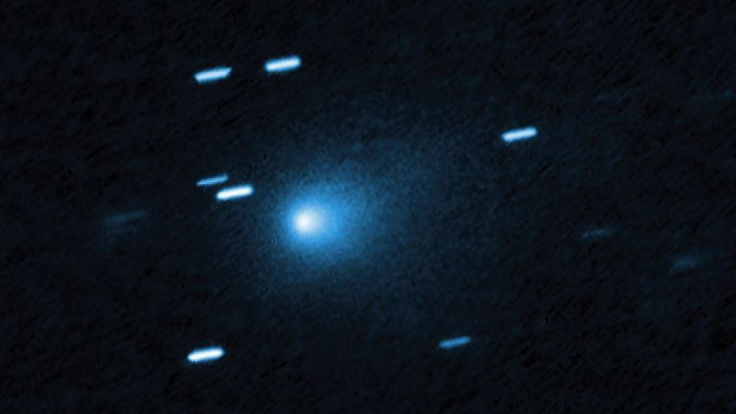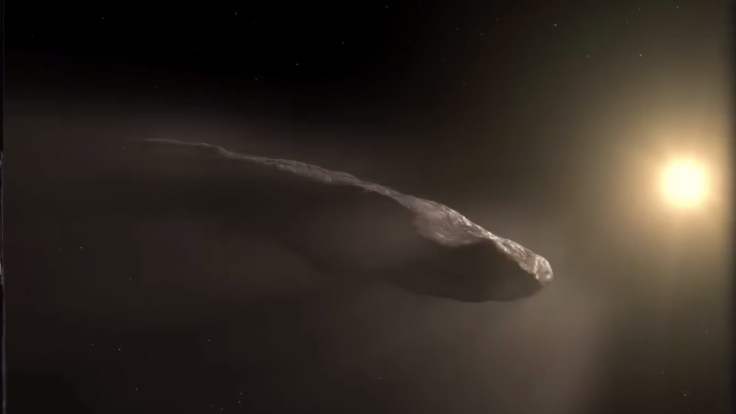3I/ATLAS is Bluer Than the Sun: New Observations Defy Earlier Color Data
3I/ATLAS turns bluer than the Sun, sparking theories it's made of unfamiliar or engineered material to withstand solar flare

New space-based images reveal that 3I/ATLAS has become dramatically brighter and bluer than the Sun as it neared its closest approach, or what scientists call 'perihelion', on 29 October 2025.
Although the object is currently hidden from Earth-based telescopes due to its position behind the Sun's glare, several space observatories have continued tracking it. These include NASA's STEREO-A spacecraft, the SOHO observatory, and GOES-19, a weather satellite equipped with a compact solar camera.
Together, these instruments captured a detailed view of 3I/ATLAS defying earlier color data as it approached the Sun.
3I/ATLAS Defies Scientific Expectations
What has scientists most intrigued is not just how bright 3I/ATLAS became, but also how it changed colour.
On an analysis shared by Harvard astrophysicist Avi Loeb, earlier this year, the object appeared red in telescope data, which is a typical colour for dusty or carbon-rich bodies. Now, however, it appears distinctly bluer than the Sun.

In visible light, the object reflects or emits light that's more intense in the blue part of the spectrum. This can happen if it's made of materials that scatter blue light efficiently or if gas or plasma around it is glowing due to sunlight or internal reactions. But the bizarre part is that 3I/ATLAS has a blue tint, which indicates that light is being emitted rather than just reflected, further suggesting that some unknown process may be powering the glow.
Loeb noted that this kind of behaviour 'far exceeds what we expect from natural Oort cloud comets, raising the possibility that 3I/ATLAS could be composed of unfamiliar material to survive close solar encounters.
How Scientists Captured 3I/ATLAS' Science-Defying Colour Change
The discovery comes from data gathered between September and October 2025.
STEREO-A's twin camera, HI1 and COR2, along with SOHO's LASCO C3 coronagraph and GOES-19's CCOR-1, all recorded an unusual pattern of brightening.
These instruments view the Sun and its surroundings from different positions, so their consistent data strengthens the credibility of the finding. It also helps scientists cross-check measurements and rule out errors.

Interestingly, the object's brightness increased rapidly as it neared the sun, far faster than typical comets. Additionally, its glow intensified at a rate that scaled inversely with distance from the Sun to the power of -7.5, a number that indicates extreme brightening compared to normal solar system objects.
Images from GOES-19's CCOR-1 showed a faint halo or glow extending up to 300,000 kilometres around the object. That's roughly the same size as a carbon dioxide plume detected by the SPHEREx Space Observatory in August.
What's Next for 3I/ATLAS
After passing perihelion, 3I/ATLAS will gradually move back into view from Earth in mid-November. It will make its closest approach to our planet on 19 December 2025, when telescopes, including Hubble and James Webb, are expected to conduct follow-up observations.
Astronomers predict it will emerge from its solar flyby brighter than before, as all comets passing the sun do, giving scientists a rare opportunity to study an interstellar visitor in detail.
However, the reason for 3I/ATLAS' rapid brightening, which far exceeds that of most comets at similar distances from the Sun, remains unclear.
As Loeb puts it, 'Whether 3I/ATLAS's behaviour is due to the laws of nature or to deliberate design, we are witnessing something that doesn't fit the ordinary patterns of comets or asteroids'.
© Copyright IBTimes 2025. All rights reserved.





















